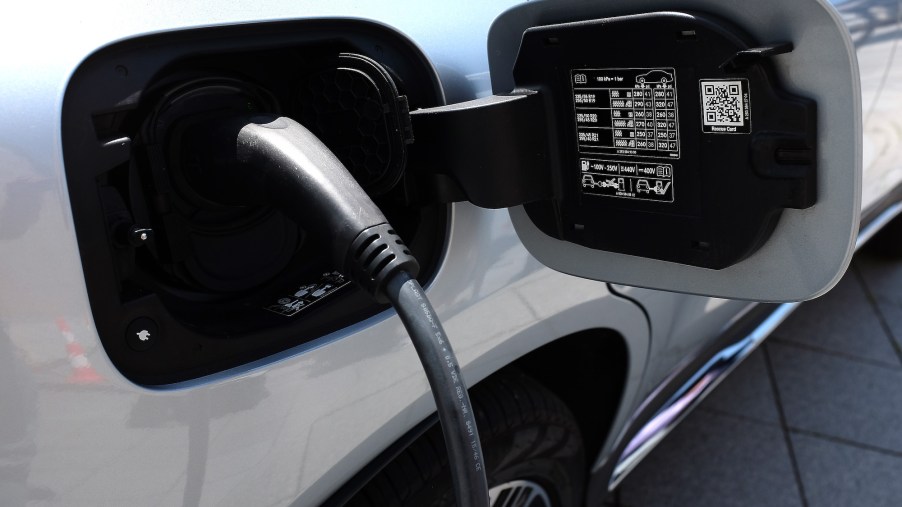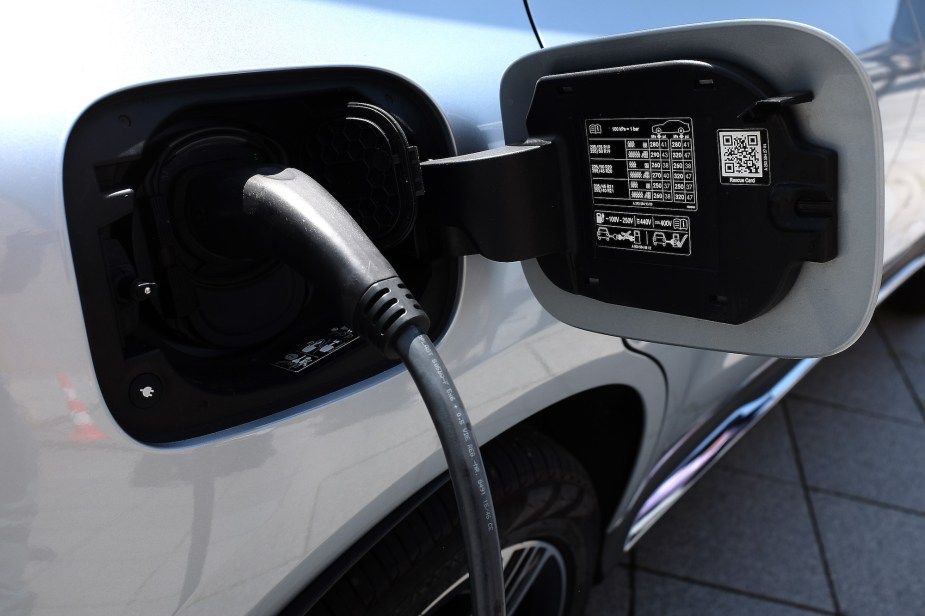
How Does Using the Radio Affect an EV’s Driving Range?
An EV is powered by electricity, which provides it with many benefits, such as zero tailpipe emissions, cheap refills, and more. That being said, EVs come with a few flaws. One of those flaws is the features in an EV, such as its air conditioning, will also use electricity, which can impact its range. Radios are another common feature that uses electricity. Here’s a look at how using the radio affects an EV’s driving range.
An overview of the range and efficiency of EVs

One of the most common specs to look at for EV shoppers right now is the car’s range number, but there’s a big issue with it. The range number doesn’t have much to do with the EV’s efficiency. Instead, as Edmunds wrote, the new mpg is kWh per 100 miles. Unlike mpg,the higher the number, the worse it is.
Big, bulky EVs will not be very efficient and will use a lot of electricity to go 100 miles. For example, the Hummer EV is not very efficient, and it uses 37 kWh per 100 miles. SUVs, meanwhile, will tend to be closer to 30 kWh per 100 miles. Smaller EVs, such as the Tesla Model 3, only need about 24 kWh per 100 miles.
Here’s how using a radio will affect an EV’s driving range
Since an EV’s electric motors and its features are all drawing electricity from the same battery, even using the radio can lower an EV’s range. That said, it won’t do that by much, and drivers will not even notice it. According to American Radio Archives, the average car radio uses about 0.02 kWh, which translates to 0.48 kWh per day. The radio is just one part of the equation, though.
Some folks may want to turn up the volume, and according to Wired, depending on the particular stereo system, peak usage can hit 2 kW. That being said, stereos are typically pretty efficient here, as they will only hit that number for milliseconds at a time. As such, a regular car with the radio pumped up only uses about 0.1 kWh or 2.4 kWh per day. As such, no matter which EV you have, using the radio will not drain much range.
For example, a Model 3 playing its radio loudly for a whole day will only lose about 10 miles of range. Counterintuitively though, since the Hummer EV is so inefficient, the 2.4 kWh it spends blasting the radio for a whole day will mean it only loses about 7 miles of range. This is because it needs a lot of electricity to move itself, and 2.4 kWh is just not that much electricity so that the Hummer EV won’t move very far on 2.4 kWh. Overall, most folks will only use the radio for an hour or two, so the range loss will be less than a mile no matter what.
Other features that can affect an EV’s driving range
As Wired wrote, regular features in an EV will also drain the battery, but like the radio, it’s usually negligible. The lights, for example, only use about 0.049 kWh of electricity. That’s double what the radio uses, but it’s still not much. EVs, like regular cars, have brake features that need some electricity, but these systems only need about 0.1 kWh, which is more than the lights and the radio, but it’s still not much.
The biggest user of electricity asides from the motors is the heating and cooling systems. Automakers are making these features more efficient, but currently they drain about 3.5 kWh. That’s over 100 times more electricity than what the radio needs.


